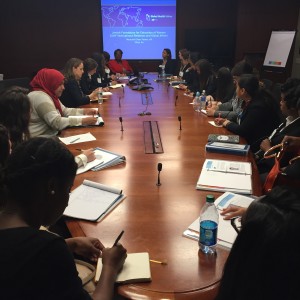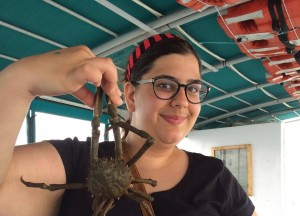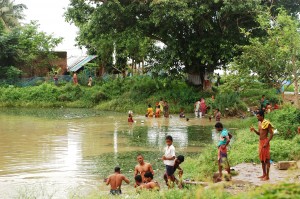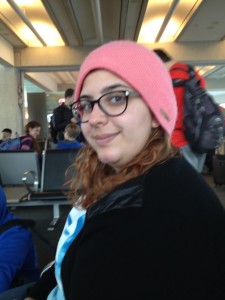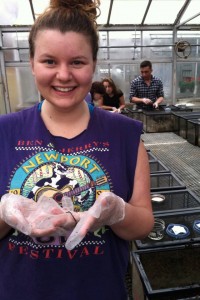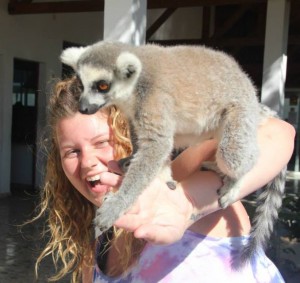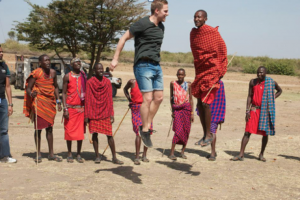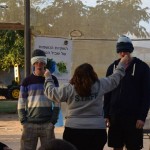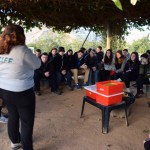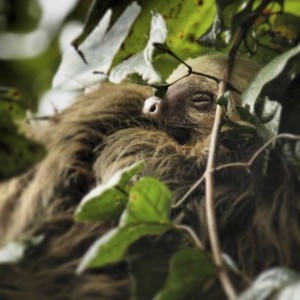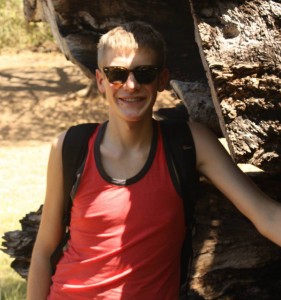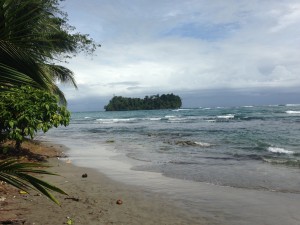
The beach at Punta Mona.
Day 6:
Before my trip to Costa Rica, I followed the packing list I was provided with, carefully selecting what I thought needed to come with me, and what I should omit. The day finally came to drive to meet the Stony Brook University study abroad group at the airport for our departure. I was sure I had everything I could possibly need on the trip while still traveling lightly. I packed my iPhone and iPad knowing very well that I would not have any service besides the occasional “treat” of Wi-Fi. The technological luxuries that were my iPhone and iPad would only serve as slender cameras for the three weeks to follow.
The first thing we did after landing in Costa Rica was travel by bus for five hours through the cloud forest, all the way to the southern tip of Costa Rica on the edge of the Caribbean Sea.
Our group’s plan was to stay at the hotel there for one night, hike into the jungle on foot, and send our luggage to the Punta Mona Center for Regenerative Design and Botanical Studies—the real destination of our trip—by boat. We reached the hotel only to find out that the sea was too rough for a boat to pass. Our only option was to backpack to Punta Mona with what we needed for two or three days, selecting items from the luggage we had on us.
Yet again, I had to pick and choose what would make the cut and what I was willing to lug around during a three-hour trek through the rainforest. Item by item, I sifted through my belongings. I felt like I was being stripped of my necessities, but made the difficult choices I felt I needed to make. By the end of the hike in I was completely exhausted and felt the burden of the heavy load on my back, making me wish I actually brought less than what I had. I went to my room and unpacked my Jansport, which contained a few shirts, shorts, body wash that doubled as laundry soap, flip-flops, a notebook, and one towel. Not exactly the most luxurious stay I’ve ever had, but I planned to mix and match my articles of clothing to make it work during our stay.

A sloth sighting!
Each day the adventure continued; I never knew what I was going to wake up to. Would it be howler monkeys with their deep, rumbling dinosaur-like groan? Or the pounding of raindrops pouring down? Or an array birds chirping high above in the treetops? There was so much for us to do and see— hundreds of edible plant species, so many exotic animals, new friends from all over the world, a tropical rainforest just outside our cabin, and a beautiful beach. I was able to connect with the land in a way I never thought possible. So many indigenous cultures have lived this way for hundreds of years and I realized why. We had so many things we needed right there. We didn’t rely on big businesses to ship us food or clean water. If we wanted a snack, we could walk out to the nearest fruit tree and pick whatever we wanted. We didn’t have to worry about pesticides or chemicals and everything was fresh off the tree. As we care for the gardens and the chickens, we were immediately rewarded. This for me is the ultimate harmony. Everything our group did was intentional and rewarding.
After meals, our leftover food scraps were set aside and fed to the chickens. The chickens returned the favor by providing us with eggs that were devoured the next morning. As the course went on, we learned about fertilizing the soil with chicken manure and were able to build our own vegetable gardens that also benefitted from the chickens. The energy from our food scraps was able to be recycled back into more food. It was such a simple concept, but to practice the most efficient methods rather than being wasteful was inspiring.

The Winter 2015 Costa Rica study abroad group (Amanda, front).
One night during our trip, we had a party where we all made chocolate by hand. Before this trip, I wouldn’t have been able to describe where chocolate even comes from. During the process, we ate the cacao fruit and collected the seeds, or cocoa beans inside. The next step was to bake the seeds so that the protective skin becomes crunchy and separated from the bean. This part was much harder than I had expected, and my fingers quickly grew tired from all the prying and peeling. As I peeled, I thought about all the times I’ve eaten a piece of chocolate. Whether it be shaped like a Santa Claus, or in a bag of M&M’s, or carefully molded into a Hershey’s bar, I had never in my entire life stopped to think about where chocolate actually comes from.
It may be the special bond I have with the caffeine-rich treat that helped me to appreciate the situation, but I really had an epiphany. While making cacao I realized how disconnected we are from our food. Everything I normally eat comes from hundreds or even thousands of miles away. Cocoa beans are harvested, shipped to the factory, mixed with milk that is probably filled with other chemicals, processed by heavy machinery, and eventually shipped to the store where it could sit on the shelf for months before I pick it up. When we got to the final steps of grinding the cacao by hand and mixing them with sugar then rolling them into small cookie shapes, a sense of joy and achievement overcame me. At that point, I instantly had a newfound appreciation for food as a source of fuel and energy. After all, food is a very powerful thing and can either be the best medicine or a slow poison.
Six long days after arriving, we are still without our luggage and doing just fine. We’ve overcome the challenges of washing clothes, bathing, and living with the bare necessities. We had wonderful food to eat, clean water to drink and shower with each day, sunshine, and so many awesome people to learn and grow with. It didn’t matter that we wore the same shirt from two days ago and then washed it that night in anticipation that we would need to wear it again in another two days. Nobody cared. Vanity was not a concern, and we were all very happy with fewer material things.
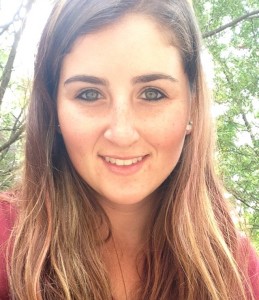 By Amanda Rooney
By Amanda Rooney
Stony Brook University ’15
Biology Major
Sustainability Studies Minor
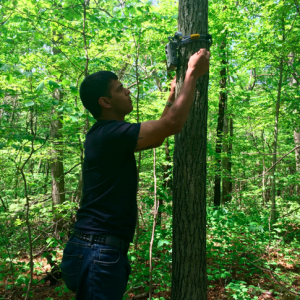
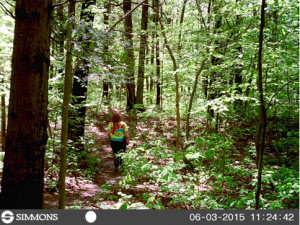


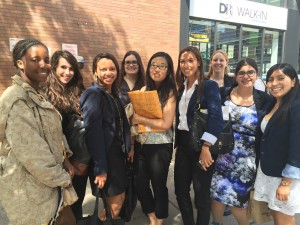
 oceans, seas and marine resources. The rallying call is for 10% of the world’s oceans set up as “marine protected areas,” where no fishing or human activity would be allowed- by 2020. OSA has gotten many countries support: Palau, Bahamas, Israel, and Poland, among others.
oceans, seas and marine resources. The rallying call is for 10% of the world’s oceans set up as “marine protected areas,” where no fishing or human activity would be allowed- by 2020. OSA has gotten many countries support: Palau, Bahamas, Israel, and Poland, among others.